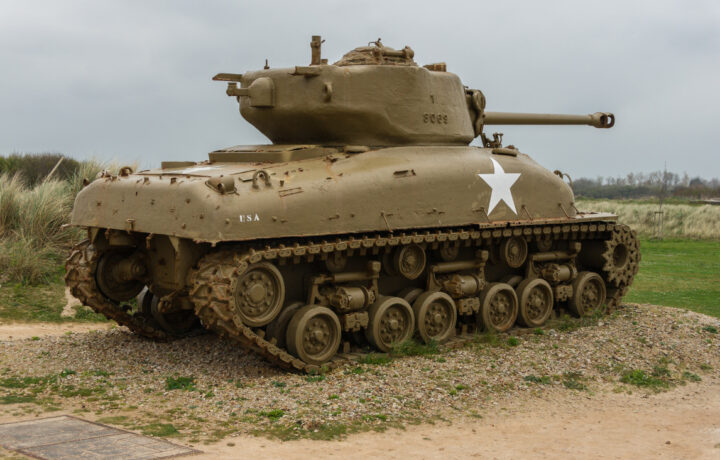Few tanker stories catch the eye of a paratrooper, but this well-crafted book is an excellent primer in leadership, direct combat, and the troop-leading procedures that must be completed at triple-time in combat conditions. Task Force Hogan, the 3rd Battalion of the 33rd Armored Regiment of the 3rd Armored Division, was named after a young Texan, who at 28 years old led his force from the shores of England, across Omaha Beach, and through countless battles up to the outskirts of Berlin.
Lead by example
The leadership on display is a humble one. It is the type of leadership that you enjoy working under. Sam Hogan trusted his subordinates to take care of their men and equipment, with little sleep and under constant direct and indirect fire from superior tanks and artillery. His unit was trusted by superiors to undertake no-notice missions against unknown enemy positions. It was the kind of team you wanted to serve on, with lots of chances to prove yourself and lots of freedom—and danger.
Sam led by example throughout the campaign. His tank was shot from underneath him 3 times, and somehow, he survived, although he was not always able to rescue his brave tank crewmen. LTC Hogan lost men at a rapid pace, and his equipment was constantly being destroyed in battle. He kept getting new crews and new tanks so they could drive ever-forward on the tip of the spear chasing the retreating Germans.
This book does an excellent job of describing tank warfare and highlights the need to understand the limitations and vulnerabilities of your own tanks, to save the lives of your force, and destroy superior tanks. You will feel like you are in the tank as the rounds are being fired by your crew. Just enough detail to help you understand the various equipment on the WWII battlefield, without boring you to death. The author struck a perfect balance throughout the book of keeping you informed but not slowing down the story of the race to Berlin.
The Heat of Battle
The focus on the process that leaders must follow from the receipt of orders from higher command until they launch forces forward is rewarding in two ways. First, you get to experience the speed at which you must digest a mission order, and share it with your units while they are preparing their men and equipment. It also gives you a chance to meet the various men who served in this unit and understand what drove them forward in battle. The book author is the son of Sam Hogan and a current military officer, so he was able to capture these details over his lifetime from his father and ensure the men of TF Hogan were recognized properly.
A timely issue that the book covers is how combat leaders must deal with civilians on the battlefield. Here we see Sam Hogan doing his utmost to prevent the Germans from committing war crimes, keep his own men from unnecessarily destroying property, and in a few cases stop his men from breaking the rules of war in the heat of the moment. How his battalion maneuvers through crowded town streets and removes German soldiers who have stayed behind to harass them is worth much attention. Especially considering current urban warfare events in the news about Ukraine and Gaza.
One final observation on the leadership of Sam Hogan comes from the moment that he and his men are forced to abandon their equipment and move backward to friendly lines in the dark to escape their surrounding position in the bulge. Sam has bad feet and lost his combat boots during battle. He is left to limp an unknown number of miles in the woods wearing overshoes, and he knows he will slow his battalion down. That story alone of how a 400-man tank unit must march through German lines with only their small arms is worth the price of the book. Luckily Sam Hogan could rely on the hunting skills of Staff Sergeant Brenson Porter from Missouri to guide them through the woods. Ensure you read about the impact of war on SSG Porter when he returns home.
Tempered Steel
The tales of heroism, humility, loss, and grace under pressure are the stuff of legends. This unit was one reason why the 3rd Armored Division is so well known to historians. Watching a 28-year-old (the age of many company commanders today) lead his battalion through hell, is a reminder that age is not the best measure of someone’s ability to lead. Sam Hogan was beloved by his men and respected by his superiors because he was a good man and he led by example when he was angry, scared, exhausted, and surrounded. This is the perfect book for future and current battalion and brigade-level leaders.




